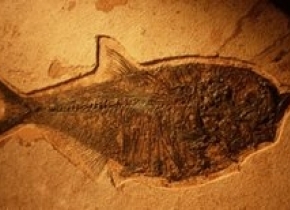
腐肉为化石形成过程带来新思路
为了更多了解腐化和化石形成,研究者们进行了非常规的实验,比如说在实验室解剖腐烂的动物。
撰文/播音 克里斯托弗斯•因泰格利亚塔
翻译 张心茹
校对 郭晓
The fossil record is far from being a complete library of everything that's ever lived.
化石记录远非一个保存所有曾经生活过的生物的完整信息库。
"The vast, vast majority of everything that's ever lived has completely decayed away, bones and all. So fossilization is a very rare occurrence." Duncan Murdock, a research fellow at the Oxford University Museum of Natural History.
“绝大多数曾经生活的生物已经全部腐烂了,包括骨架和所有其他东西。因此化石化是一个很偶然的事件”。牛津大学自然历史博物馆的研究者邓肯·穆尔多克表示。
"But then if you play the numbers game and think about how many organisms have lived, then fossilization is inevitable, that some things will get into the fossil record."
But what parts of an organism fossilize—and in which stage of decomposition—can vary, meaning it can be hard to reconstruct a living animal from what's represented in rock. Plus, most of the fossil record is bones and teeth. To find any evidence of the soft-tissue of ancient animals is incredibly rare.
“但是,如果关注数字,考虑到曾经生活过的生物总数,那么化石形成是不可避免会出现的,一些物质会留到化石记录里”。但是一个生物体的哪些部分会变成化石,以及处于腐烂的哪一阶段,则会出现不同情况,这意味着人们很难从岩石中呈现的遗迹重建一个活体动物。另外,大多数化石记录是骨头和牙齿。发现古生物软组织证据的情况很罕见。
So, to learn more about the process of decay and fossilization that can preserve soft tissue, Murdock and his team dissect marine animals, like hagfish and lampreys, as they lie rotting in the lab. The study of how organisms become preserved is called taphonomy. And it can stink.
因此,为了更多了解腐化过程,以及能保留软组织的化石形成过程,穆尔多克和他的团队在实验室解剖正在腐烂的海洋生物,比如七鳃鳗和八目鳗。对生物体如何被保存下来的研究被称为埋藏学。这个过程可能会很臭。
"Yeah, I mean it's certainly a very smelly place to work sometimes." Smelly, but it gives them a step-by-step look at how creatures' bodies change as they decay.
“是的,这里有时当然会很难闻“。虽然气味难闻,但这种研究能让他们(研究者)逐步观察生物体在腐烂过程中的变化。
"The first signs the animal is decaying is the very softest tissues like the guts and eyes start to decay away, and then fine structures like the gills. And then things like the fins start to fall off, and you see the skin falling off. And then eventually all that you're left with are some little bits of cartilage, and remnants of the muscle blocks."
“动物正在腐烂的第一个迹象是诸如肠和眼睛的最软组织开始腐烂,继而是鱼鳃等精细结构。然后是鳍之类的结构开始脱落,皮肤开始破碎。最终剩下的是一些软骨组织,以及肌肉块残余。
They break down their work in the journal Palaeontology—and make the case for why rotting flesh may give a fresh look at the fossil record [Mark A. Purnell et al., Experimental analysis of soft‐tissue fossilization: opening the black box]. Because what you don’t find—and the degraded state of the material you do find—have their own stories to tell about the history of life on Earth.
他们在《古生物学》杂志上剖析了研究结果,将其作为案例解释了为何腐肉可能为化石记录提供“新鲜”看法。[Mark A. Purnell et al., Experimental analysis of soft‐tissue fossilization: opening the black box] 因为,那些尚且不为人知的证据,和已发现的、处于降解状态的物质,都可以给地球生命史提供线索。
未经书面许可任何人不得复制或镜像
京ICP备11000850号
 京公网安备11010502039775号
京公网安备11010502039775号 信息网络传播视听节目许可证0111611号
国家科技基础条件平台

















